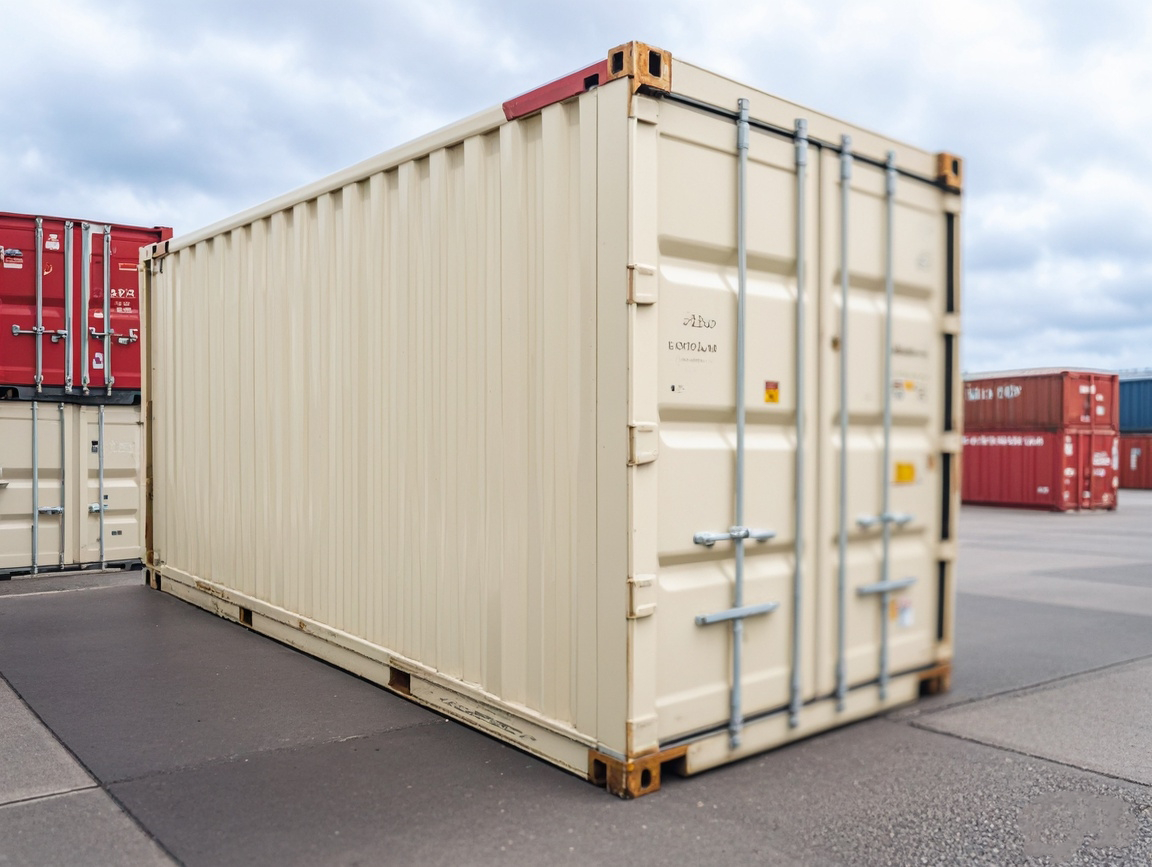-
Shipping Containers
- Container Parts
- Roof Panel
- Side Panel
- Front End Panel
- Door Panel
- Front Corner Post
- Rear Corner Post (Outer/Inner)
- Cross Member
- Bottom Side Rail
- Top Side Rail
- Door Sill
- Front Bottom Rail
- Top End Rail
- Door Header Upper/Lower
- Door Rail
- Floor Spacer
- Angle
- Top/Bottom End Rail
- Door Edge Member
- Door Sealing
- Door Frame Profile
- Door Lining
- Door Hardwares
- Door Gasket
- Side Panel/Lining
- T-Floor
- Roof Panel/Lining
- Cross Member
- Bottom Side Rail
- Top Side Rail
- Ledge PVC
- Kazoo Drain
- Auto Drain
- Alu Tube
- Auto Drain Center Part
- PVC Drain Pipe
- PVC Plugs f. Drain with Ring and Steel Wire
- Door Screw
- Door Screw Nut
- Door Screw Rubber
- Tapping Screw
- Stainless Blind Rivet
- Lashing Ring
- CSC Plate
- Welding Wire
- Tapping Screw Bit
- Vehicle Parts
- Ship Supplies
- 00. Provisions
- 11. Welfare Items
- 15. Cloth & Linen Products
- 17. Tableware & Galley Utensils
- 19. Clothing
- 21. Rope & Hawsers
- 23. Rigging Equipment & General Deck Items
- 27. Painting Equipment
- 31. Safety Protective Gear
- 33. Safety Equipment
- 35. Hose & Couplings
- 37. Nautical Equipment
- 39. Medicine
- 45. Petroleum Products
- 47. Stationery
- 49. Hardware
- 51. Brushes & Mats
- 55. Cleaning Material & Chemicals
- 59. Pneumatic & Electrical Tools
- 61. Hand Tools
- 63. Cutting Tools
- 65. Measuring Tools
- 69. Screws & Nuts
- 75. Valves & Cocks
- 77. Bearings
- 79. Electrical Equipment
- 81. Packing & Jointing
- 85. Welding Equipment
- 87. Machinery Equipment
- Vehicles
- Lashing Tools
- Logistic Tools
ContainersInsight into Shipping Containers: All You Need to KnowOct 10,2024Containers are essential transportation tools in modern logistics and international trade. Their specifications, types, and related professional terms are the foundation for understanding global freight operations. This article will provide a detailed introduction to the basic knowledge of containers, from container numbers to the specifications and uses of various types of containers, and explain related professional terms to help you better understand the role and management methods of containers in logistics.
1.Container Number First. Basic Components of Containers
First. Basic Components of Containers
The container number is the unique identity identifier of a container and is composed of the following parts:
Owner Code: This is the "ID number" of the container, consisting of four capital letters registered by the International Container Bureau, representing the owner of the container.
Serial Number: Composed of six Arabic numerals, identifying different containers. If the number is less than six digits, "0" will be added in front to ensure the standard length.
Check Digit: Obtained through a checksum operation on the first four letters and six digits to ensure the accuracy of the owner code and serial number.
Container Type Code: Identifies the size and type of the container. For example, "2" represents a 20-foot container, "4" represents a 40-foot container, and "M" represents a 48-foot container. The second digit reflects the width and height of the container. For example, "2" represents a container with a width of 8 feet and a height of 8.5 feet, and "5" represents a container with a width of 8 feet and a height of 9.5 feet. The "1" in the fourth digit indicates that there are container doors at one or both ends and "full-open" container doors on one or both sides.
2.Specifications and Sizes of Containers
Different types of containers have different specifications and sizes. Here are the standard sizes of common containers:
40-foot General Purpose Container (40GP)
External Dimensions: 40 x 8 x 8.6 feet (12.192m x 2.438m x 2.591m)
Internal Dimensions: 11.8m x 2.13m x 2.18m
Cargo Weight: 22 tons
Volume: Approximately 54 cubic meters (the actual loadable volume may be slightly larger, such as 58 cubic meters).
40-foot High Cube Container (40HQ)
External Dimensions: 40 x 8 x 9.6 feet (12.192m x 2.438m x 2.896m)
Internal Dimensions: 11.8m x 2.13m x 2.72m
Cargo Weight: 22 tons
Volume: Approximately 68 cubic meters.
Second. Types of Containers
Containers come in various types, each with its own characteristics to meet different transportation needs:
1.Dry Cargo Container
Also known as a general cargo container or a universal container, it is suitable for transporting various items except bulk liquids or temperature-controlled goods. Its enclosed structure usually has container doors at one end or on the side, and is equipped with devices for stabilizing goods inside. It is required to be kept clean and have good watertightness.
2.Ventilated Container
With ventilation holes on the side walls or roof, it is suitable for shipping goods that need ventilation and moisture protection, such as raw hides, fruits and vegetables, wood, and grains. When the ventilation windows are closed, it can also be used as an ordinary general cargo container.
3.Open Top Container
The top can be easily loaded and unloaded, and it comes in two types: hard top (made of thin steel plate) and soft top (made of canvas or plastic cloth). It is suitable for large or fragile goods, such as heavy loads like steel, wood, and glass. It is hoisted in from the top by a crane to reduce the risk of damage and facilitate stabilization inside the container.
4.Platform Based Container
Also known as a flat rack container, it is characterized by having a load-bearing bottom plate and four corner posts, but the top, side walls, and end walls can be removed or omitted. It supports loading and unloading from multiple directions such as front, back, left, right, and above, and is suitable for loading oversized cargo such as heavy machinery, steel, steel pipes, and wood.
5.Platform Container
A simplified version of the platform based container, with the corner posts removed or made foldable. It is mainly composed of a bottom plate with high load-bearing capacity. It is suitable for loading heavy and large cargo. On the deck of a container ship, multiple platform containers can be combined into a large platform to load larger and heavier cargo.
6.Reefer Container
Designed specifically for transporting frozen food and capable of maintaining a constant temperature. It is divided into built-in type (with a freezer inside the container) and external type (with cold air supplied by the ship's refrigeration system). Ensures that food such as fish, meat, and fresh fruits and vegetables remain fresh during transportation.
7.Solid Bulk Container
Designed specifically for shipping powdered or granular cargo such as soybeans, rice, and various feeds. With a loading port on the top and a discharge port on the bottom, it improves loading and unloading efficiency, reduces dust pollution, and enhances freight quality.
8.Tank Container
Designed specifically for transporting liquid cargo such as alcohol, oil, and chemicals. Composed of a tank body and a frame, with a loading port on the tank top and a discharge valve on the tank bottom to ensure the safe and efficient transportation of liquid cargo.
9.Car Container
Designed specifically for shipping small cars. Without side walls, it only has a frame and a bottom plate. The bottom plate is equipped with lashing equipment and anti-slip steel plates to ensure the stability of the cars. Most are designed as a double-deck structure and can load two small cars.
10.Livestock Container
Designed specifically for shipping live poultry and livestock such as pigs, cows, and sheep. The top and side walls are made of special materials to avoid direct sunlight. Equipped with ventilation windows and cleaning ports to ensure the comfort and safety of animals during transportation.
11.Garment Container
The upper side beams inside the container are equipped with crossbars and hooks. Clothes are directly hung on the hooks for packaging-free transportation. This not only saves packaging materials and costs but also reduces manual labor and improves the quality of garment transportation.
Third. Professional Terms of Containers
1.Full Container Load (FCL)
Refers to the transportation method in which the shipper fills one or more containers with goods and the carrier transports them from the shipper's warehouse or factory to the consignee's warehouse or factory. The shipper is responsible for packing, counting, and applying lead seals, while the consignee is responsible for unpacking.
2.Less Than Container Load (LCL)
Refers to goods that do not fill a container. Usually, the carrier consolidates the goods of multiple shippers into one container for transportation. The carrier is responsible for consolidating, packing, unpacking, and delivering the goods. Due to the involvement of multiple shippers and consignees, the handling of LCL is relatively complex and the cost is also higher.
3.Slots and Slot Numbers
In container yards or on ships, it is a system used to indicate the stacking positions of containers. Slots are usually divided according to the size and shape of containers and are assigned unique numbers (slot numbers) for identification and management. For example, "040201" means the container is located in the fourth row, starboard second row, and first deck.
4.Demurrage and Detention
Fees related to the usage time of containers. Demurrage usually refers to the fee generated when a container stays in the yard or port beyond the free period; detention refers to the fee generated when the cargo owner fails to return the container to the carrier in time.
5.Container Yard/Depot
Usually refers to the place where containers are stacked and managed on or near the dock. Drivers usually pick up containers at this yard.
6.Restow
Refers to moving a container from one position to another in the yard, or picking up containers in a different order and moving the upper container to extract the lower container.
7.Hazardous Cargo
Refers to goods with potential hazards that require special handling and transportation, such as flammable, explosive, toxic, radioactive, and other items.
8.Transshipment
Refers to transferring goods from one ship to another to complete the final transportation.
9.Load/Discharge
Refers to the process of loading goods into a container or unloading goods from a container.
10.Electronic Data Interchange (EDI)
Refers to the process of exchanging data using electronic technology. It is usually used to simplify paperwork and improve efficiency in the container transportation process.
CIMC Intermodal Equilink Co., Ltd. (“CIMC Equilink”) is the subsidiary of China International Marine Containers (Group) Co., Ltd (CIMC), with the staunch support from CIMC Group on resources, focuses on providing container spare parts, new and used containers, vehicles, vehicle parts, and other logistic tools. Over the years, it has established long-term business relationships with many clients and suppliers and gained a high industry reputation. Please tell us your needs and questions by email(info.equilink@cimc.com) or submit a quick quote, we are very honored to serve you.
Quick Quote
Copyright © 2019 CIMC Equilink - Container Parts

 中文
中文















